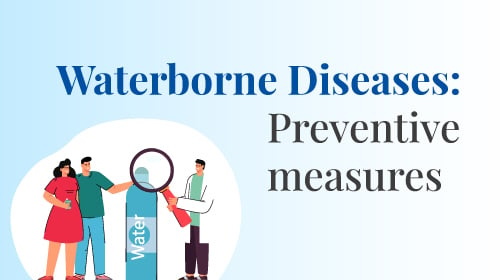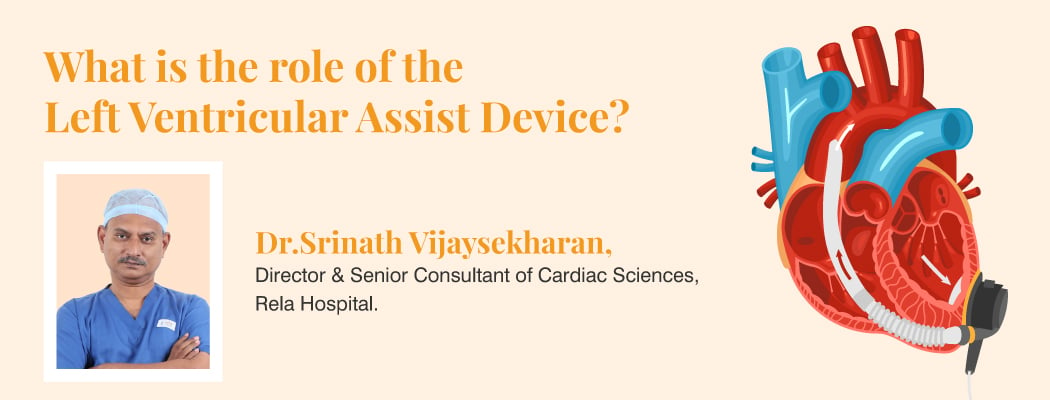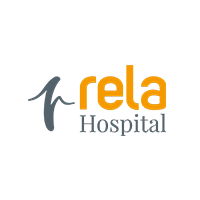How to prevent water-borne disease
July 12, 2022

Water, which can both give and take life, is a dangerous substance. Unclean and poor-quality water is to blame for about 3.1% of deaths worldwide. In addition, 80 percent of diseases are thought to be water-borne globally, according to the World Health Organization. Alarmingly, one-third of India’s 600 districts are considered unsafe for drinking because their groundwater contains harmful amounts of fluoride, iron, salt, and arsenic. Fluorosis, a debilitating disease brought on by too much fluoride and a frequent ailment in northern India’s Rajasthan state region, affects about 65 million people worldwide.
The United Nations assessed India’s water quality at an appalling 120th place out of 122 countries for the quality of water that is fit for human consumption, with 122nd place being the worst. Water pollution from industrial waste, human waste, animal waste, garbage, untreated sewage, chemical effluents, etc., makes poor water quality unavoidable. Waterborne illnesses and infections can be contracted by drinking or cooking with such contaminated water, including amoebiasis, giardiasis, and toxoplasmosis.
Contaminated water may contain pathogens, including Hepatitis A and E viruses and E. coli bacteria, which can be spread from person to person by eating street food or touching food touched by someone with the virus. It might result in food poisoning. Dangerous illnesses include cholera and typhoid fever as a result. Meningitis, polio, dysentery, diarrhoea, and dysentery are other watery illnesses.
Washing your face with dirty water can result in skin and eye infections like trachoma. Blindness or vision impairment can result from trachoma.
Although everyone is at risk from contaminated or polluted water, rural communities are susceptible to waterborne ailments. Anyone anywhere can get a waterborne sickness. Infants, young children, the elderly, and people with diabetes, chronic heart disease, kidney disease, etc., are at higher risk.
Some of the common water-borne diseases are:
- Typhoid fever – Salmonella Typhi bacteria are the source of typhoid fever, which can harm numerous organs. If the appropriate care is not received, it may result in several complications and even death. Don’t ignore typhoid fever symptoms like:
- General body pain
- Sweating
- Dry cough
- Fatigue
- Constipation
- Acute Gastroenteritis – Another bacterial infection is Acute Gastroenteritis. This may cause watery diarrhoea, which can cause dehydration. It can be fatal if you disregard it. Below-mentioned is some of its symptoms:
- Watery diarrhoea
- Vomiting
- Dehydration
- Low BP
- Sunken eyes
- Giardiasis – A parasite called Giardia Lamba is the source of the watery disease giardiasis. It affects the small intestine, and its symptoms are listed below:
- Abdominal pain
- Nausea
- Vomiting
- Appetite loss
- Dysentry – Dysentery, which bacteria or parasites can bring on, is an inflammation of the gut, particularly the colon. Its a result of symptoms like:
- Mucus in faeces
- Incomplete evacuation
- Fatigue
- Food poisoning – E. coli is a harmless bacteria that often dwells in your intestines. But if you consume contaminated food or drink, some strains can make you sick. The following are some signs of an E Coli infection or Food poisoning:
- Stomach cramps
- Fatigue
- Vomiting
- Low-grade fever
- Hepatitis A & E – The Hepatitis A virus causes hepatitis A, a liver ailment. If you contract the hepatitis A virus, you may not immediately experience symptoms. But if you do get symptoms, they typically appear after 3–4 weeks:
- Itching
- Dark urine
- Light coloured stools
- Loss of appetite
- Jaundice
- Sudden nausea
- Polio – The majority of polio victims exhibit no symptoms. However, only a small percentage of those infected display flu-like symptoms, such as
- Fever
- Back pain
- Sore throat
- Headache
- Neck pain
- Cholera – Vibrio cholera is the germ that causes cholera, a different bacterial infection. It might be fatal if you disregard it. The signs are identical to acute gastroenteritis.
Some risk factors of water-borne diseases
- Lack of clean drinking water
- Poor sanitation
- Lack of personal and hand hygiene
- Lack of awareness
Prevention
-
- Drinking clean and purified water
- Don’t ingest water while swimming.
- Avoid drinking water straight from ponds, lakes, or rivers.
- Never consume tap water.
- To purify the water for consumption, use filters or RO.
- Water must be heated before consumption.
- Maintaining a personal hygiene
- Drinking clean and purified water
Clean your hands for 30 seconds every time:
-
-
- After using the restroom and after changing your child’s diaper.
- After coming in contact with animals and cleaning up their waste.
- Prior to eating and cooking food
- Regularly trim your nails
- Encourage judicious towel usage
- Environmental Management
-
Flushing correctly. Use hot water and a chlorine-based detergent to clean the toilet. Discourage urinating outside.
-
- Vaccinating
Get immunised against infections including typhoid and hepatitis A.
- Food Safety
- Before consuming, wash all the fruits and vegetables.
- Consume only pasteurised milk and milk products.
- 71 degrees Celsius is the ideal temperature for successfully cooking all types of meat.
- Foods should be kept raw and cooked separately.
- Properly clean the serving pieces.
- If you have signs of water-borne disease, avoid cooking.
Precautions to be taken
- Make sure the water is clearly clean and silt- and sand-free. Then, to remove visible filth, filter the water.
- Drink only pure, healthy water from a water purifier or a portable source.
- Get filters, RO units, and other water purification equipment periodically repaired and maintained.
- Make sure the water you store is sterile.
- Add antiseptic liquid, such as Dettol, to bathwater that seems suspicious.
- Maintain good hand hygiene by regularly washing your hands with soap after using the restroom, coming home, before and after preparing food, and before consuming anything.
- Teach kids to wash their hands. Children should develop the habit of always washing their hands after playing games and before entering the house.
- Make sure the food is thoroughly cooked and cleaned.
People also ask
1. What are three water-borne diseases?
- Typhoid
- Dysentry
- Giardiasis
2. What are the four major types of water-related diseases?
- Polio
- Hepatitis A & E
- Food poisoning
3. What are the five water-borne diseases?
- Acute Gastroenteritis
- Polio
- Hepatitis A & E
- Food poisoning
- Typhoid
4. What are 10 diseases caused by polluted water?
Water contamination and inadequate sanitation have been linked to the spread of diseases such as cholera, diarrhoea, dysentery, hepatitis A, typhoid, and polio. Individuals are exposed to preventable health risks when water and sanitation facilities are unavailable, inadequate, or poorly managed. This is especially true in health care facilities, where a shortage of water, sanitation, and hygiene services puts both patients and employees at risk of infection and disease. Infections occur in 15% of hospitalised patients worldwide, with the proportion being substantially higher in low-income nations.
5. What are the 5 effects of water pollution?
Water quality degradation harms the environment, human health, and the global economy. The World Bank’s president, David Malpass, warns of the economic consequences: “Deteriorating water quality is stifling economic progress and increasing poverty in many countries.” The explanation is that when biological oxygen demand — the indicator that monitors organic pollution in water — exceeds a specific threshold, the growth of the regions within the related water basins is reduced by one-third. Here are some of the other consequences:
- Biodiversity destruction – Water pollution depletes aquatic habitats and causes uncontrolled phytoplankton development in lakes (eutrophication).
- Contaminated food chain – Toxins introduced into foods by fishing in contaminated waterways and using wastewater for livestock production and crops might be hazardous to our health when consumed under a scarcity of drinkable water According to the UN, billions of people worldwide lack access to safe drinking water and sanitation, particularly in rural regions.
- Disease – According to the WHO, around 2 billion people are forced to drink unclean water, exposing them to diseases such as cholera, hepatitis A, and dysentery.








